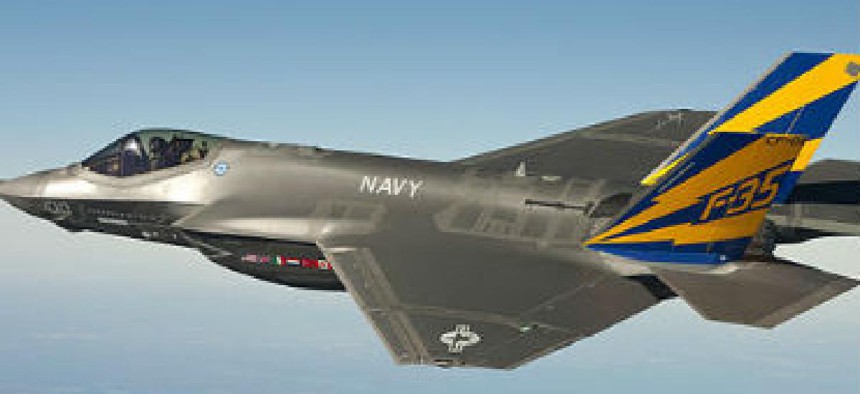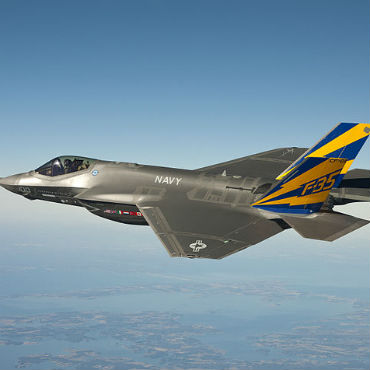Software problems slow F-35 program

Delays could hurt the Joint Strike Fighter's capabilities even as the planes enter the Air Force, Navy and Marine Corps fleets.

The Navy's variant of the F-35 Joint Strike Fighter, the F-35C, conducts a test flight over the Chesapeake Bay.
The Defense Department needs to increase its spending on software for the Joint Strike Fighter so the next-generation aircraft can be rolled out on schedule, a GAO report says.
The 2,500 planned F-35 Lightning II aircraft, projected to cost $400 billion by 2037, will be used by the Air Force, Navy and Marine Corps.
Inadequate capabilities and the retesting of multiple versions are causing problems in the development and testing of mission systems software, GAO auditors wrote in a report released March 24.
"Delays of this magnitude will likely limit the warfighting capabilities that are delivered to support the military services' initial operational capabilities -- the first of which is scheduled for July 2015 -- and at this time it is not clear what those specific capabilities will be because testing is still ongoing," the report states. "In addition, delays could increase the already significant concurrency between testing and aircraft procurement and result in additional cost growth."
GAO said DOD needs to drastically increase spending on the program in the next five years and average $12.6 billion in expenditures for the next 24 years in order to execute the program as planned.
Those investments could be a problem given the current fiscal environment, GAO auditors noted, particularly because the Joint Strike Fighter has been targeted for per-unit spending reductions rather than increases.
GAO recommended that the DOD secretary conduct a reassessment of which benchmarks can realistically be met and share the report with Congress and the military services by July 2015. DOD officials concurred with that conclusion.
NEXT STORY: Robin Lineberger: All about the co-opetition


